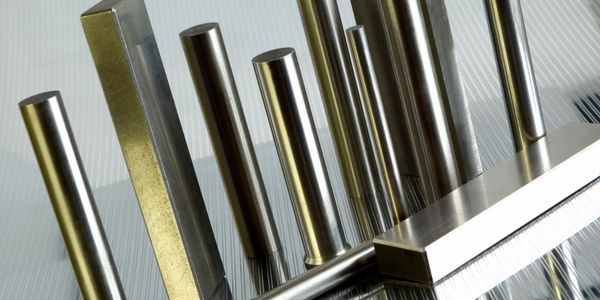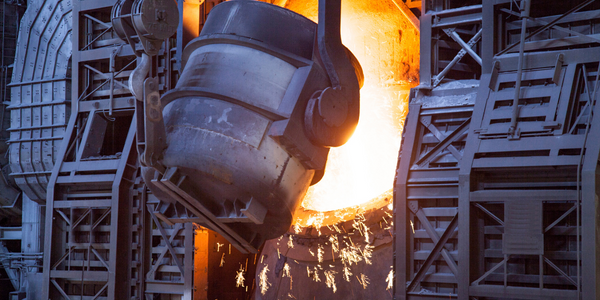Download PDF
Schwering & Hasse Ensures Quality Manufacturing at High Speed Using Apama
Technology Category
- Analytics & Modeling - Real Time Analytics
Applicable Industries
- Metals
Applicable Functions
- Quality Assurance
Services
- System Integration
The Challenge
Schwering & Hasse (S&H), a Germany-based company, manufactures a large volume of copper magnet wire, a critical component of numerous electrical products. The manufacturing process requires minute tolerances for the insulation, with even a tiny deviation from the specification rendering the wire useless. S&H's mission is to manufacture as much wire as possible with as few errors as possible. However, the company faced challenges in maintaining high quality standards due to rapidly changing customer demands and product specifications. The existing information systems were not equipped to create a factory that was truly “transparent” to both line workers and managers. The company needed a system that could provide immediate and accurate visibility into multiple production quality factors in real time.
About The Customer
Schwering & Hasse (S&H) is a Germany-based company that specializes in the manufacture of copper magnet wire. The company operates 400 production lines 24 hours a day to produce enough magnetized copper wire each year to stretch beyond Venus. Copper magnet wire, which is coated with a thin layer of insulation, is a critical component of numerous electrical products, such as transformers and motors. The company works with many of the world’s leading manufacturers, such as Siemens®, Bosche® and Continental®. S&H processes over a million euros per day in copper, employing hundreds of people and using prodigious amounts of electricity.
The Solution
S&H selected Apama as the platform for its new quality management solution. Apama gives S&H the ability to monitor dozens of independent quality factors in real time and process them against relevant production data. For example, Apama enables S&H to be aware of specific machines, copper lots, workers and production parameters such as temperature—all in the context of historical manufacturing data. The system can handle up to 50,000 production events per second, more than enough headroom to keep up with the production lines. Apama provided S&H with a complete toolset to design and implement the quality management solution across its complete “transparent factory.” The developer tools made it possible to create factory-floor-level interfaces using screens that line workers could use to monitor quality and input data of their own.
Operational Impact
Quantitative Benefit
Related Case Studies.

Case Study
Goldcorp: Internet of Things Enables the Mine of the Future
Goldcorp is committed to responsible mining practices and maintaining maximum safety for its workers. At the same time, the firm is constantly exploring ways to improve the efficiency of its operations, extend the life of its assets, and control costs. Goldcorp needed technology that can maximize production efficiency by tracking all mining operations, keep employees safe with remote operations and monitoring of hazardous work areas and control production costs through better asset and site management.

Case Study
KSP Steel Decentralized Control Room
While on-site in Pavlodar, Kazakhstan, the DAQRI team of Business Development and Solutions Architecture personnel worked closely with KSP Steel’s production leadership to understand the steel production process, operational challenges, and worker pain points.

Case Study
Bluescope Steel on Path to Digitally Transform Operations and IT
Increasing competition and fluctuations in the construction market prompted BlueScope Steel to look toward digital transformation of its four businesses, including modern core applications and IT infrastructure. BlueScope needed to modernize its infrastructure and adopt new technologies to improve operations and supply chain efficiency while maintaining and updating an aging application portfolio.

Case Study
RobotStudio Case Study: Benteler Automobiltechnik
Benteler has a small pipe business area for which they produce fuel lines and coolant lines made of aluminum for Porsche and other car manufacturers. One of the problems in production was that when Benteler added new products, production had too much downtime.

Case Study
Continuous Casting Machines in a Steel Factory
With a very broad range of applications, steel is an important material and has been developed into the most extensive alloy in the engineering world. Since delivering high quality is absolutely crucial for steel plants, ensuring maximum productivity and the best quality production are the keys to competitiveness in the steel industry. Additionally, working conditions in steel factories are not suitable for workers to stay in for long periods of time, so manufactures usually adopt various machines to complete the steel production processes. However, the precision of these machines is often overestimated and the lack of flexibility also makes supervisors unable to adjust operating procedures. A renowned steel factory in Asia planned to improve its Distributed Control System (DCS) of furnaces as well as addressing the problem of insufficient accuracy. However, most well-known international equipment suppliers can not provide a satisfactory solution and local maintenance because the project needed new technologies to more accurately control equipment operations. By implementing Advantech’s automated monitoring and control solution, steel factories can not only improve the manufacturing processes but can also allow users to add additional functions to the existing system so as to make sure the operation runs at high efficiency.

Case Study
Automated Predicitive Analytics For Steel/Metals Industry
Asset to be monitored: Wire Compactor that produces Steel RebarCustomer Faced The Following Challenges:Dependent upon machine uptime.Pressure cylinders within the compactor fail to control compression and speed causing problems in binding the coil.Equipment failure occurs in the final stage of production causing the entire line to stop, can you say bottleneck?Critical asset unequipped with sensors to produce data.





